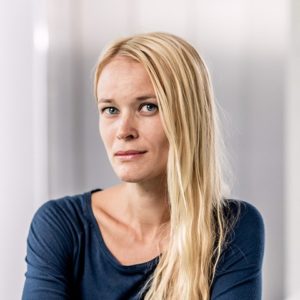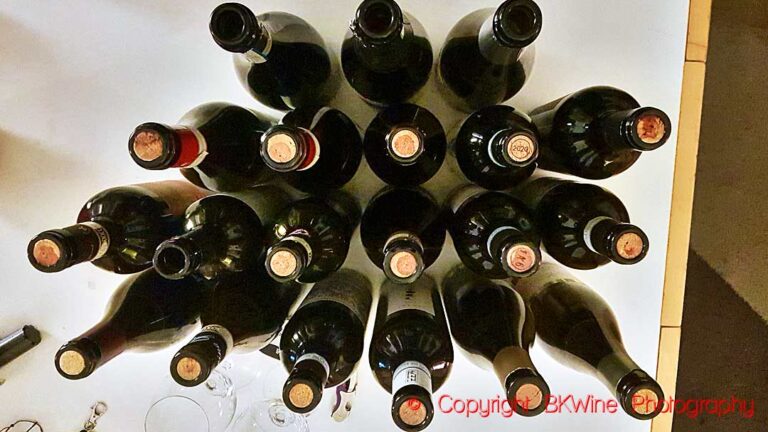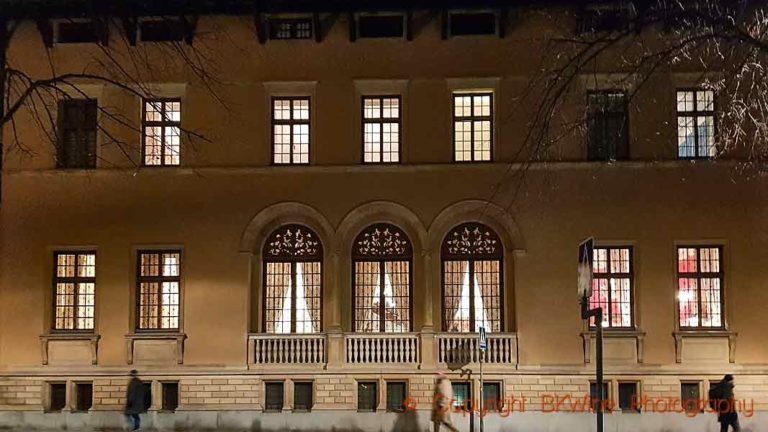Italian wines are since long loved by Scandinavians. But on Monday the 27th of May the roles were changed when Scandinavian wines were presented in Piedmont during a seminar held for the Master in Wine students at UNISG in Pollenzo. The presentation gave an overview of the long and sometimes complicated history of alcohol in Nordic countries, from the Viking ages and the belief that God connected to humans through intoxication, to the ”big Nordic inebriation period” from the 16th to the 18th century, during which akvavit was seen as a universal solution to all problems and to the 19th century´s excessive alcohol consumption in Scandinavia (the average consumption per capita of pure alcohol in Sweden was 45L per year in 1829!).
In modern times Scandinavian governments have made big efforts to reduce alcohol consumption through rationing systems and a state monopoly on alcohol sales. The still existing monopoly systems in Sweden and Norway (and Finland) have strong support among citizens as they not only are a sales channel but for many also stand for a part of the construction of the welfare state. Denmark, however, has always been a bit of an exception in Scandinavia; they have no alcohol monopoly since they consider it an infringement to the freedom of trade.
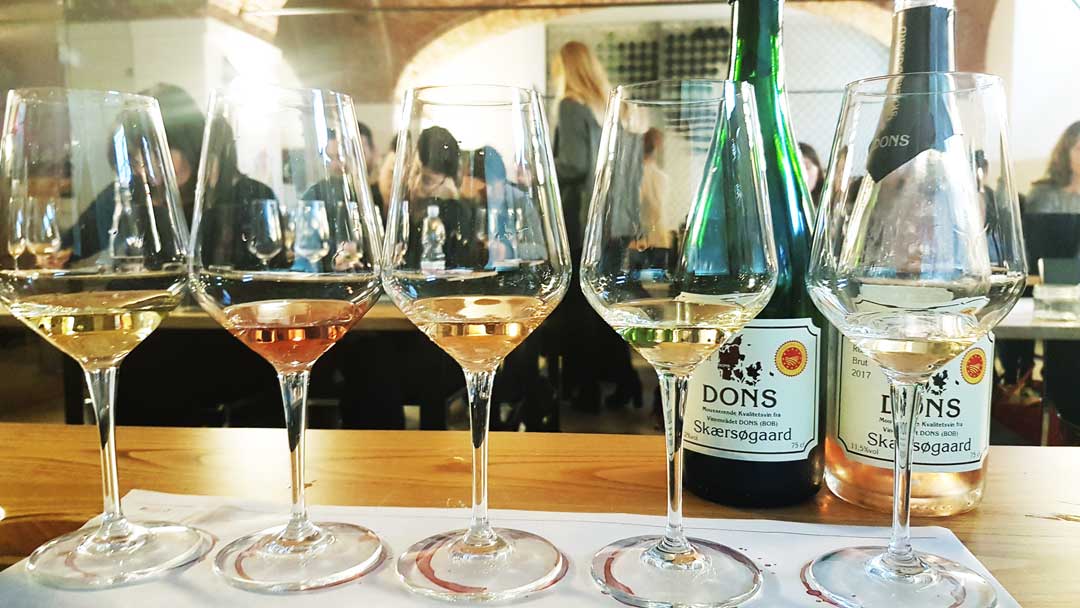
Hybrids
The historical overview was followed by some information about resistant grapes and hybrid grapes used to produce wine in cool climates. Hybrid grapes are varieties where a Vitis vinifera grape has been crossed with another Vitis variety. One reason for this can be to get a new variety (hybrid) with better resistance to diseases and cold temperatures. The development of hybrid grapes was initially a response to the Phylloxera outbreak in Europe in the late 19th century. Many were created in Germany (at the WBI Freiburg research institute). Due to the historical use of hybrids in bulk wines, both in Europe and in the US, the reputation has been influenced negatively.
Today, however, climate change and an increasingly global wine market are slowly challenging this. Resistant grapes need less pesticide treatment which is another reason for the increased interest today. For now, different EU countries have different regulations regarding hybrids. In Germany, for instance, they are allowed for Prädikatswein, whereas in France they cannot be used for AOC wines. Although the discussion regarding hybrids is more active in Europe there is also some development in the US. Prestigious universities such as the University of Minnesota and Cornell are improving hybrid development, helped by DNA research.
Solaris and rondo are the most common grapes in Scandinavia. Solaris was created in 1975 at the grape development institute in Freiburg, Germany, by Norbert Becker. Solaris är is a crossing between merzling and ”gm 6493”. Merzling is a crossing of seyve-villard x freiburg 379-52 (where freiburg 379-52 is a riesling x pinot gris). ”Gm 6493” is zarya severa x muscat ottonel. Officially solaris is classified as a Vitis vinifera, although it has a pedigree from different varietals.
Solaris is resistant both to cold temperatures and fungi, ripens quickly and tends to give wines with high sugar levels and balanced acidity. It produces wines which often have notes of pineapple, ripe apples, hazelnut and honey. Solaris is common in Germany, Switzerland and Belgium.
Rondo is a hybrid grape created in 1964 by professor V. Kraus in Czechoslovakia by crossing zarya severa (a hybrid that is a crossing of malingre précoce and the Asian Vitis amurensis) and sankt laurent (a crossing of pinot noir and a second unknown parent). It is an early ripening and frost resistant variety which also has a high resistance to powdery mildew.
Rondo is a dark-skinned grape that gives full-bodied wines with ruby red colour, high sugar levels and dark fruit and berries profile. Other than in Scandinavia, rondo is common also in Germany, England, Ireland and the Netherlands.
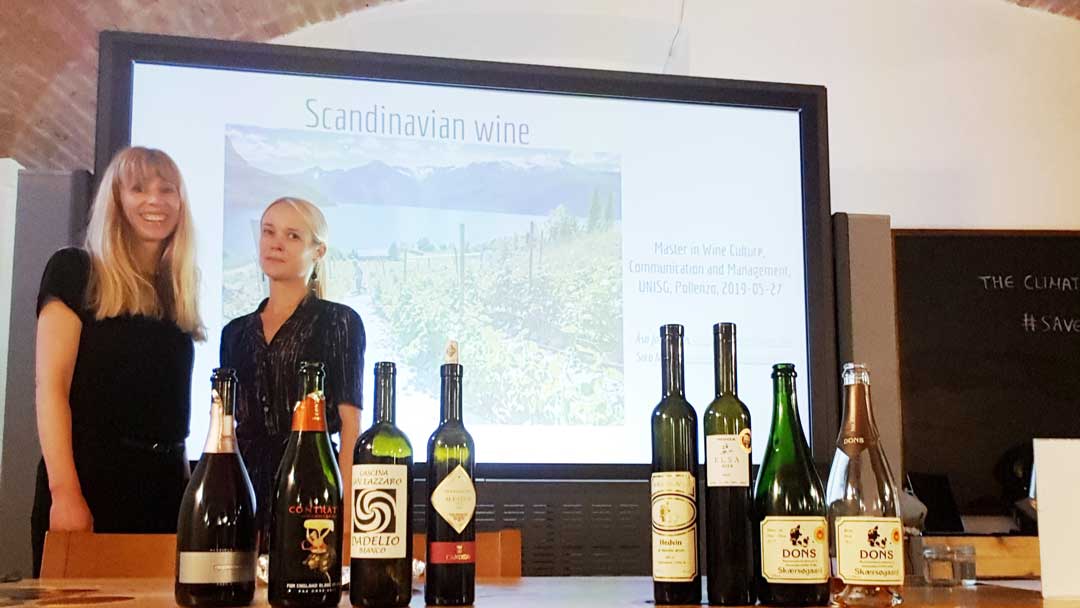
Winemaking in Scandinavia
What about wine production in Scandinavia today? Although alcohol production from fermented berries has been traced as far back as 5000 years in Scandinavia, winemaking from grapes is a more recent phenomenon. There are some traces of grape cultivation from medieval times connected to Catholic monasteries, but there is no clear evidence of winemaking.
Modern winemaking in Scandinavia started as late as in the 1990s. Denmark has been the pioneering country due to a milder climate as well as different cultural influences, being the more ”continental” of the Scandinavian countries.
Although being small in size, Denmark is today the biggest wine producing country in Scandinavia with around 100 commercial producers and many hobby winemakers. In Denmark, red winemaking was more common at the beginning, but today they also make white and sparkling wines. Grape growing is concentrated in the coastal areas and the islands. The soil is mainly sandy, of different types.
In 2018 Denmark received its first PDO (protected designation of origin, BOB in Danish, what is called AOP/AOC in France and DOC in Italy) when the region of Dons became an official wine designation. It´s the only Scandinavian classified wine region as of today and the world´s most northerly one.
In Sweden, the second biggest country for winemaking in Scandinavia, the production started in the late 1990s. Today there are around 50 commercial producers in Sweden, and the majority of these, about two thirds, are located in ”Sweden’s own vineyard” Skåne (Scanie) in the south. The Baltic islands Gotland and Öland are also suitable for winemaking and host some producers.
The soil in Sweden is mainly moraine with high mineral contents from the glacier period. The interest in and knowledge of wine production is growing fast in Sweden and several wineries have been awarded prizes in international competitions.
Norway is the smallest winemaking country in Scandinavia but has a long history of producing berry and fruit wine. Today, Norway has around 40 wine producers. The world´s most northerly vineyards are located in Lerkekåsa, in Telemark, situated on the same level as Alaska, although the Gulf Stream mitigates the climate. Just like in Sweden, the soil in Norway is rich in minerals due to the long-lasting glacier period. A benefit for grape growing in Norway, despite the very cold climate, is that there are lots of lakes and mountains which reflect the sunlight, a somewhat to the Mosel Valley in Germany.
Denmark and Sweden are official winemaking countries within the EU, but Norway is not since they are not EU members. However, the production in both Denmark and Sweden is still so small that it is not eligible for EU support or subject to planting rights regulations.
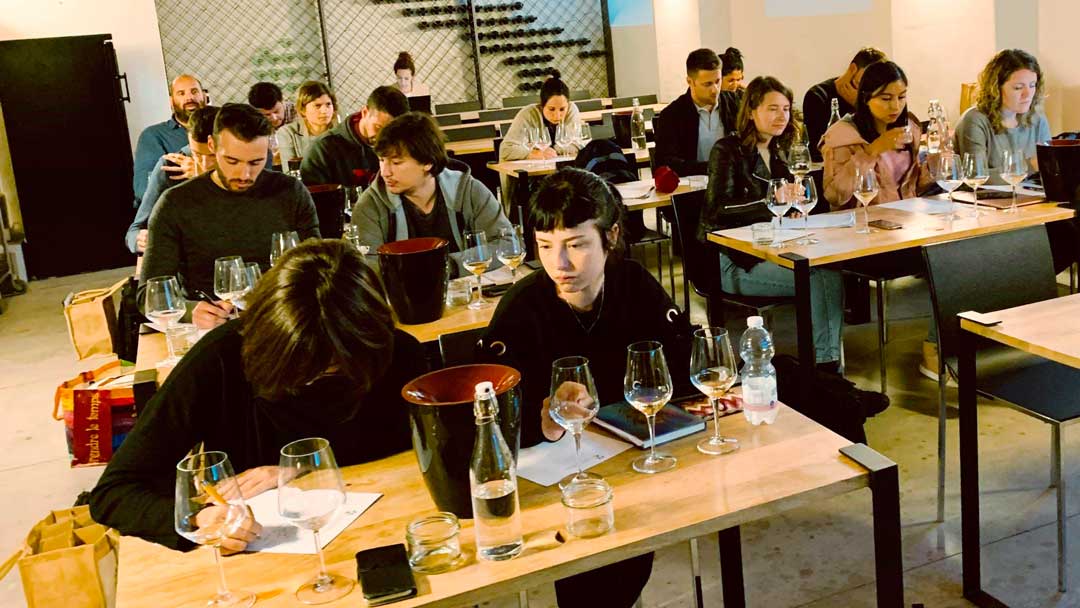
The tasting of Scandinavian wines
The seminar ended with a blind tasting of four wines from Denmark and Sweden. First out were Skærsøgaard Dons sparkling blanc de noir 2017 (rondo) and Dons rosé brut 2017 (cabernet cortis & rondo), the PDO wines mentioned earlier. They are both sparkling wines produced by bottle fermentation and aged for 9 months on the lees. Skærsøgaard also participated with the fortified wine ”Hedvin”, 2013 made from rondo, regent and cabernet cortis and aged on oak barrels for 5 years. From Sweden, there was Fredholm’s wine ”Elsa 2018”, a still white wine made from solaris fermented in steel tank and with some addition of oak cubes during fermentation.
The wines were compared to Italian counterparts, Contratto, for England, blanc de noirs 2014, Gianluca Viberti Nebbiolo d’ Alba DOC spumante, Dadelio Bianco da Cascina San Lazzaro 2014 (a blend of moscato and cortese) and Candido Aleatico Salice Salentino DOC.
The opinions were split for most wines, but interestingly the Danish rosé and Swedish solaris were preferred to the sparkling nebbiolo and the Italian moscato/cortese by over half of the students.
As for the dessert wine, the strong presence of oak and high sugar and alcohol level in the Danish wine did not convince the students. Some feedback the students gave was that the Scandinavian wines generally tended to have a higher acidity, in some cases a ”herbaceous”, ”green” or even a bit ”funky” nose (especially the blanc de noirs from Skærsøgaard). Regarding the nose on Skærsøgaard blanc de noirs, the students detected chamomile, citrus, herbs, pear and honey, and the mouthfeel was described as fresh, with balanced acidity, white flowers, more fruity than yeasty, easy to drink and crispy. The bubbles were described by most as slightly more aggressive than in the Italian counterpart, with short to medium persistence, not very structured but easy and pleasant to drink, some found a bit of ”foxiness”. To most students, this was described as a new type of wine. ”I have never tasted a sparkling wine like this before”, was one of the comments.
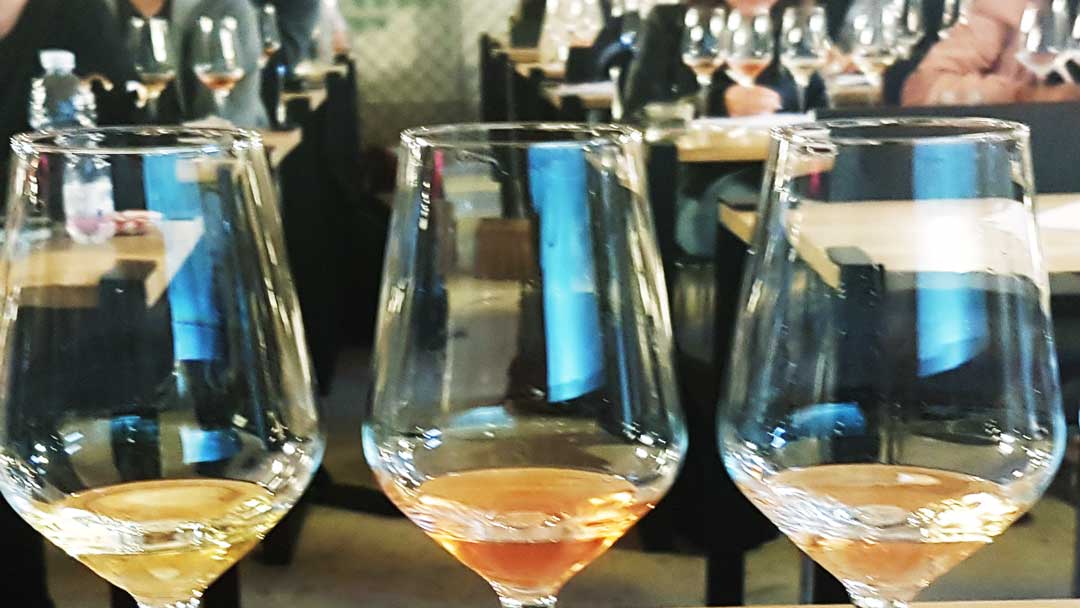
Skærsøgaards rosé was described as having a nose of geranium, flint, strawberries, herbs, red fruits, smoke, mushrooms, roses and fennel. In the mouth, it was perceived as acidic, rustic, salty, fresh, mineral, and with some bitter notes. The bubbles were perceived as quite aggressive by some, and finer to others, however not very persistent. To most tasters, this wine had a more yeasty character than the blanc de noirs. As mentioned, more than half of the students preferred Skærsøgaards rosé to the Italian sparkling nebbiolo.
Both sparkling wines from Denmark were described as very fruit-forward and pleasant to drink, although the students would have liked some more complexity and more ageing on the lees.
The Swedish wine ”Elsa” made from solaris was described as having on the nose notes of cooked pear, jasmine, apricot, loquats, tropical fruit, petrol, white peach, kiwi, melon, flint, mature fruit, herbs, pineapple, honey and lychee fruit. In the mouth, the students found pineapple, freshness and saltiness, a good body although not very complex. One student described Elsa as ”having lovely aromas on the nose and on the palate, presence of oak but well integrated, well balanced with a softness in the mouth”. Compared to the Italian moscato/cortese this was a clear winner and even the winner of the whole tasting!
The event ended with a tasting of the dessert wine from Skærsøgaard, Hedvin 2013. Many students guessed that the wine from Salento was the Scandinavian wine due to its lower sugar level and higher acidity. In this case, Scandinavia did not win, and most students found the oaky flavours and high sugar content much too dominant and overwhelming.
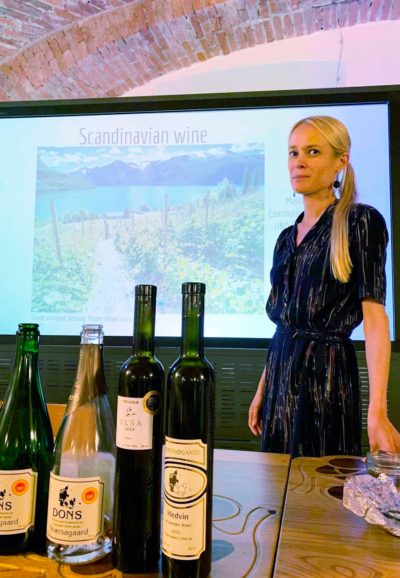
Conclusions?
What are the conclusions after the seminar? Certainly that the subject of Scandinavian wine creates curiosity and is something new to most people. Resistant varieties and hybrids seem to have a great potential given the climatic changes and the environmental awareness of today. However, prejudices against hybrid grapes as not capable of producing top-quality wines must be washed away before these wines can gain higher status (this is why blind tastings are useful!).
The trend of making wines in cooler climates, in general, seems to align well with both the increased interest in local production as well as gastronomic tourism. It also goes well together with consumers preferences for lighter and more adaptable wines. The wine production in Scandinavia could help fight rural depopulation and could create job opportunities. Not being able to sell wines directly at the wineries in Sweden (as is the law today) is for sure is a big obstacle for the growth of the wineries.
Another thing to improve is marketing and branding. Today there is lots of experimentation, which is good, but with time perhaps the creation of a ”Scandinavian wine style” could be helpful in order to gain recognition on an international level. The wine industry in Scandinavia is still a start-up industry with high costs and much to learn, but things seem to be moving quickly and the future looks exciting!
—Sara Nässén & Åsa Johansson
Sara Nässén writes about wines and wine regions in Italy and has a Master in Wine Culture, Communication and Management at UNISG, Pollenzo, Italy. She is currently based in Piedmont.
Åsa Johansson is BKWine’s person in Italy. She lives in Florence since the early ’00s. Asa writes regularly on wine and food in Swedish and Italian publications as well as online.


